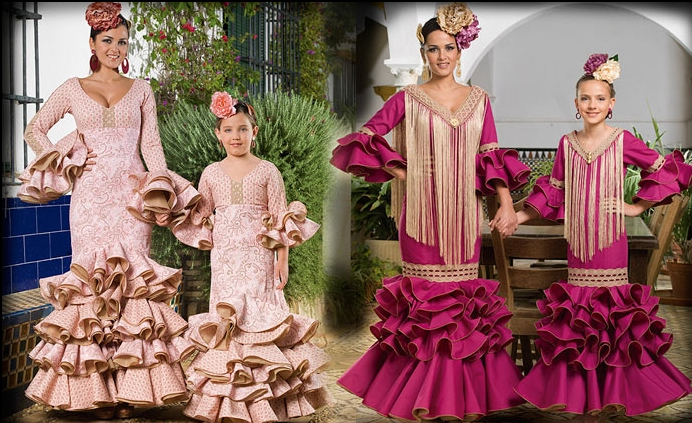This year has been charged of amazing models permeated of the character and colour. The flamenco fashion 2014 has achieved, one more time, to do a hole to the panorama of the spanish fashion. As a sign of this the big successes are shown every year on the walkway of SIMOF, for that the participating is every time more numerous and results to a great impact to the medias of the communication.
We will pass the year 2014 again, highlighting the tendencies that have succeeded this year:
- The canastero dresses have become to be the latest fashion and have arrived to stay.
- The lunars are a classic that always succeeds, this year predominating the little lunars.
- The embroidered strip as a decoration, on the neckline or just under the waist on the entry to the ruffle.
- The fringes on the neckline giving this traditional actualized touch.
- The sleeves of lace.
- The prints, mainly the florals came treading strong on this season.
- The flamenco dresses with the cut under the breasts.
- Double ruffles enhancing the waist.
- Shawls of silk, brocades and plumeti.
- And what has been the revolution of the year, the escotes on the back and the boat or also called bateau necklines

All these news of the season have been able to find on the flamenco collection 2014 of Asunción Peña. The dresses that are happy and colorful, sophisticated, elegant, sensual, designed by the high-quality fabrics and comfortable models. Perfect dresses for the actual flamenco woman. Every flamenco dress is a work of art and as a results to that every woman who wears it, feels unique and special. The new collection of the next year also arrives treading strong, tradition and innovation united to create unique dresses.









.jpg)
























